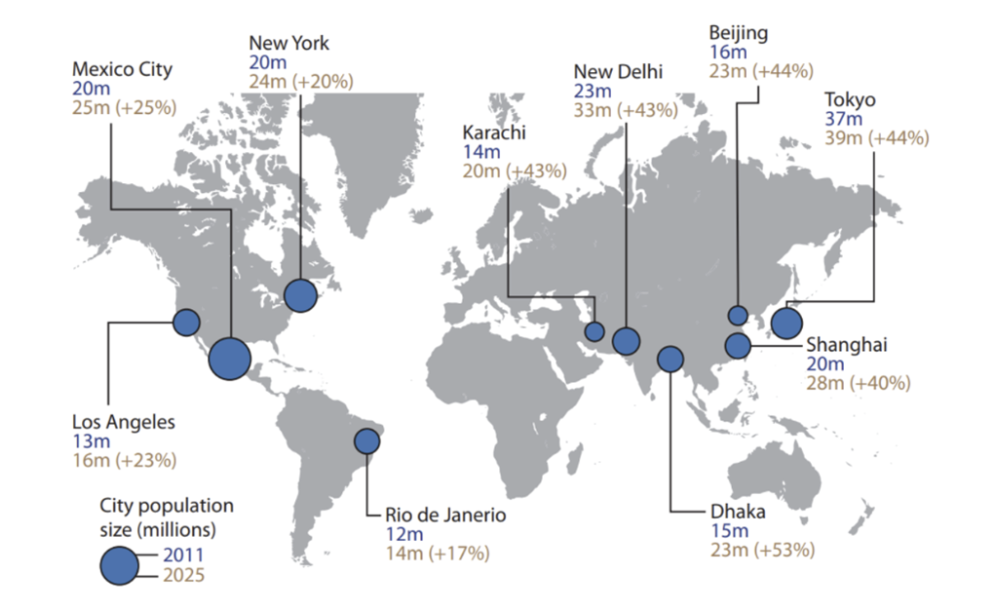Study Fig 1, which shows the world's megacities

Fig 1
[1]
[3]
[2]
Did this page help you?
Study Fig 1, which shows the world's megacities

Fig 1
[1]
[3]
[2]
Did this page help you?

Fig 1 - Percentage of China’s population living in urban and rural areas
Study Fig 1, which shows China’s urban and rural population
[1]
Did this page help you?
Urban areas have many problems. Using the photograph Fig 1, explain how this improves an urban area

Fig 1 - An electric bus
Did this page help you?
| Country | % living in urban areas in 2019 | % living in urban areas in 2050 (projected) |
| UK | 84 | 90 |
| China | 60 | 80 |
| India | 35 | 53 |
| Nijeria | 51 | 70 |
Which country will have the greatest increase in % living in urban areas?
Did this page help you?
Increased urbanisation can cause social and environmental challenges. Suggest one cause for each:
Did this page help you?
Study Fig. 2.1, which shows information about urbanisation.

Fig. 2.1
[1]
Using Fig. 2.1 only, name:
- the continent which has most cities with a population of 10 million or more
- the continent where there are no cities with a population of over 5 million.
[2]
[3]
Did this page help you?
For a named urban area you have studied, describe what has been done to improve quality of life in a squatter settlement
Did this page help you?
For an urban area you have studied, describe the impact of urbanisation on people who live there.
Did this page help you?
For a named urban area, describe the causes of a problem faced by the residents and explain how the authorities in that urban area are attempting to solve it.
Name of urban area .....................
Did this page help you?
For a named urban area you have studied, describe what has been done to reduce the problems caused by urban growth.
Name of urban area ................................
Did this page help you?
Describe the problems caused when urban areas expand into rural areas
Did this page help you?
Study Fig. 2.2 (below), which is a photograph of part of an urban area in an LEDC which is being redeveloped.

Did this page help you?
Study Figs. 2.2 and 2.3, which are photographs taken in part of the urban area of Mumbai, India (an LEDC).


[3]
[5]
Did this page help you?